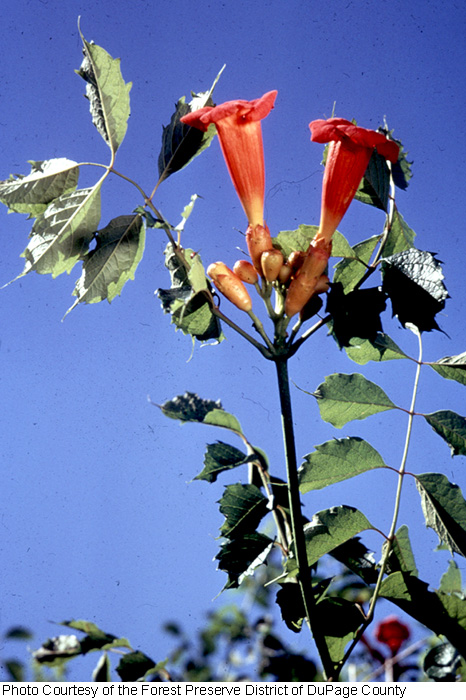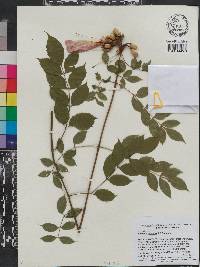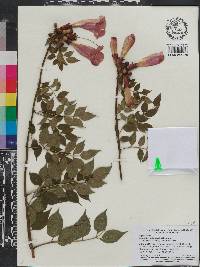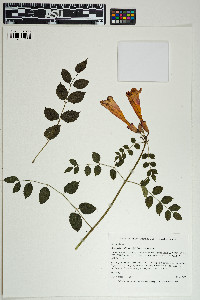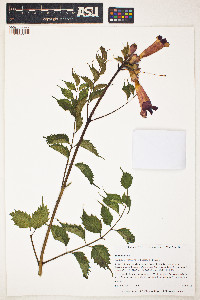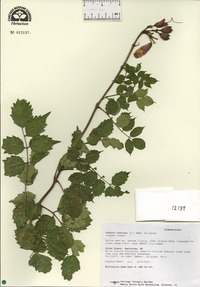Perennial woody vine, climbing vertically or creeping horizontally using root-like holdfasts to 18.3 m long
Leaves: opposite, stalked, pinnately compound, 20 - 38 cm long, with seven to thirteen leaflets.
Flowers: borne in clusters of two to twelve at ends of stems, tubular, five-lobed, red to orange outside tube, yellow inside, 5 - 9 cm long.
Fruit: a pod, green changing to brown, 5 - 15 cm long, splitting in half to release flattened seeds (2 cm long) with two transparent wings.
Bark: yellow and smooth, becoming brown and shredded on older growth.
Twigs: stiff, greenish red to light brown.
Buds: small, triangular.
Leaflet: stalked (winged), dark green above, paler beneath, 2 - 10 cm long, 1 - 5 cm wide, egg-shaped to oval, coarsely toothed, hairy-veined beneath.
Similar species: Campsis radicans is a distinctive vine in the Chicago region. It has pinnately compound leaves, leaflets with coarsely toothed margins, stems with root-like holdfasts, trumpet-shaped red to orange flowers, and 5 - 15 cm long pods containing seeds with transparent wings.
Flowering: mid June to mid September
Habitat and ecology: Tolerant of most soil types, this vigorous species often escapes cultivation. It climbs trees, posts and fences or forms colonies along the ground in floodplains, fields, along roadsides, edges of woods, and near abandoned railroads.
Occurence in the Chicago region: native
Notes: Campsis radicans was introduced from the Southern U.S. as an ornamental vine. It attracts hummingbirds with its showy red flowers. However, it is an aggressive species that resprouts from broken roots underground. Some people may suffer from contact dermatitis after touching the leaves and flowers.
Etymology: Campsis comes from the Greek word for curvature, referring to its curved stamens. Radicans means "with rooting stems."
Author: The Morton Arboretum

